Choosing the right cut of meat can make a significant difference in the flavor and texture of your dishes. Arm Roast and Chuck Roast are two popular options with distinct characteristics that can influence your culinary creations. Understanding the differences between these cuts is essential for achieving a delicious outcome in your cooking endeavours.
Let’s explore the nuances of Arm Roast vs Chuck Roast to help you make an informed decision the next time you’re at the butcher’s counter.
Arm Roast vs. Chuck Roast: Choosing the Right Cut
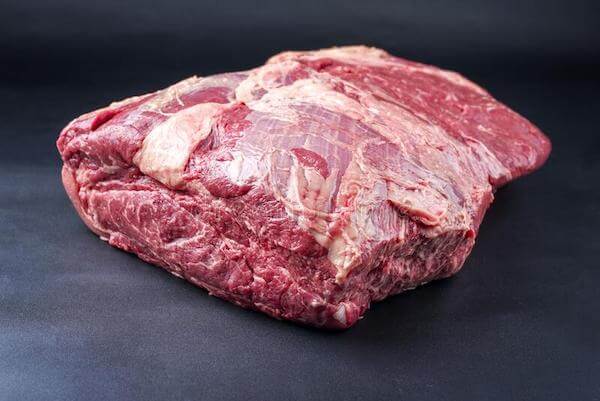
Selecting between Arm Roast and Chuck Roast depends on your preference for flavor, tenderness, and fat content. Here’s a breakdown of their key differences:
- Cut and Flavor: Arm Roast, a compact, rectangular cut from the lower shoulder (chuck) area, offers good flavor with a leaner profile. Chuck Roast, from the shoulder itself, boasts richer flavor and more marbling for tenderness.
- Texture: Arm Roast has a slightly firmer texture, while Chuck Roast is known for its melt-in-your-mouth tenderness.
- Cooking Methods: Both cuts benefit from slow cooking methods like braising or pressure cooking. Arm Roast might need extra cooking liquid for optimal tenderness, whereas Chuck Roast is versatile for various preparations.
- Nutrition: Both are good sources of protein and essential nutrients. Arm Roast is generally lower in fat.
- Price and Availability: Chuck Roast is more common and affordable, while Arm Roast might be slightly pricier.
Arm Roast: Lean and Flavorful
Sourced from the lower chuck, Arm Roast is a rectangular cut known for its versatility and good flavor. This leaner option is ideal for those watching their fat intake. It excels in slow-cooking methods like braising or pressure cooking and might benefit from extra liquids for maximum tenderness.
Chuck Roast: Tender and Flavorful
A popular cut from the shoulder area, Chuck Roast is known for its rich flavor and tenderness. The marbled fat keeps it moist and flavorful during slow cooking methods like braising or roasting. Its versatility makes it perfect for stews, pot roasts, and sandwiches. When cooked properly, Chuck Roast becomes incredibly tender and juicy.
Flavor and Texture: Arm Roast vs. Chuck Roast
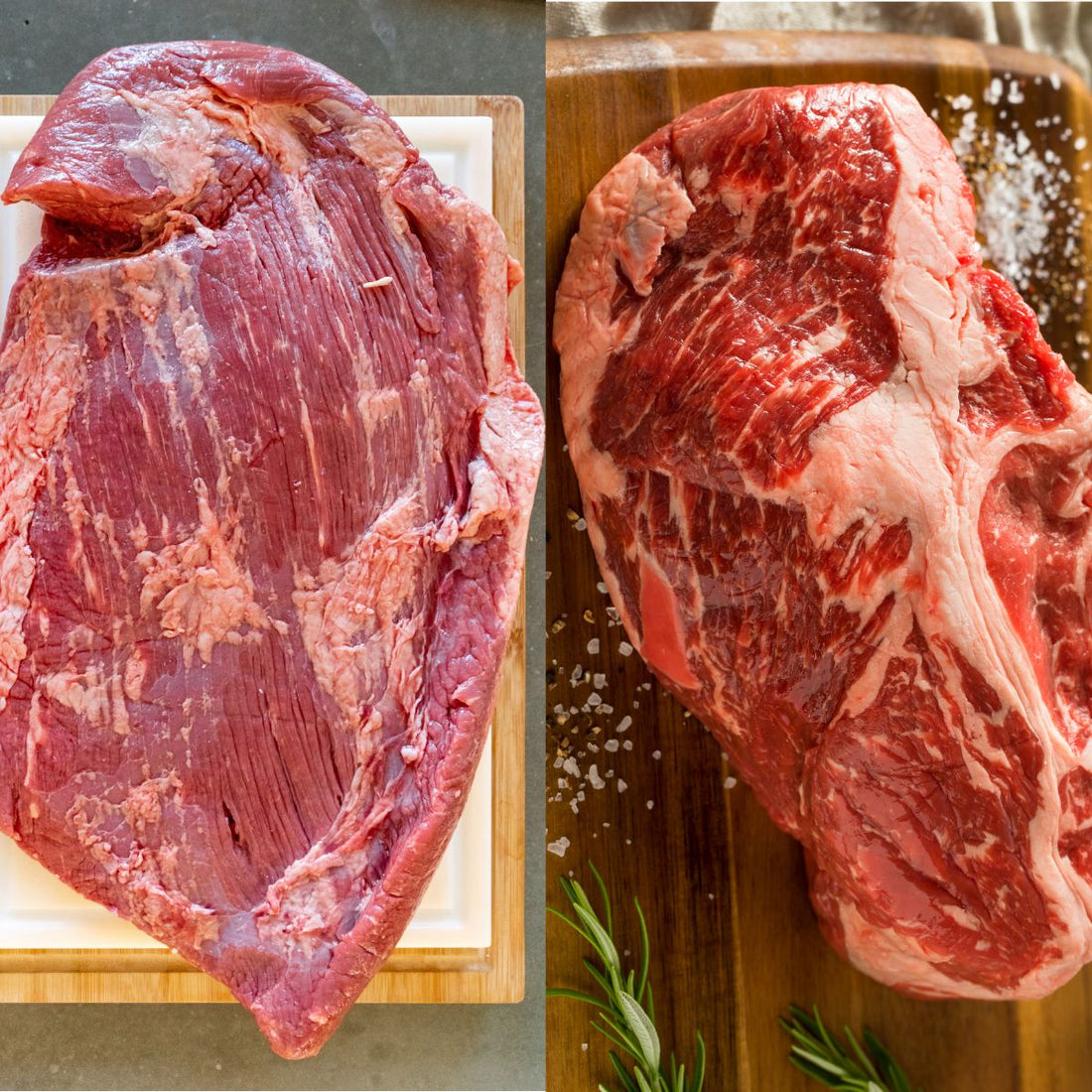
While both arm roast and chuck roast are great for slow-cooking methods, they have distinct differences in flavor and texture:
Arm Roast:
- Leaner with good flavor: Despite being leaner, arm roast packs a rich, savory beef flavor.
- Even cooking: The compact rectangular shape ensures even cooking throughout the roast.
- Firmer texture: Arm roast has a firmer texture compared to chuck roast.
- Versatile cooking: Arm roast can be braised, roasted, or slow-cooked for a delicious and satisfying meal.
Chuck Roast:
- Deeper, beefier flavor: Chuck roast boasts a deeper and richer beef flavor thanks to its marbling of fat.
- Tender and juicy: The fat content makes chuck roast incredibly tender and juicy, practically melting in your mouth.
- Shred or slice: The tender texture allows for easy shredding or slicing, perfect for pot roast or beef stew.
- Succulent and flavorful: Chuck roast delivers a delightful combination of juiciness and flavor, especially when cooked low and slow.
Both cuts offer a delicious and enjoyable dining experience, so the choice depends on your preference for flavor and texture.
Arm Roast and Chuck Roast: Cooking Methods for Delicious Results
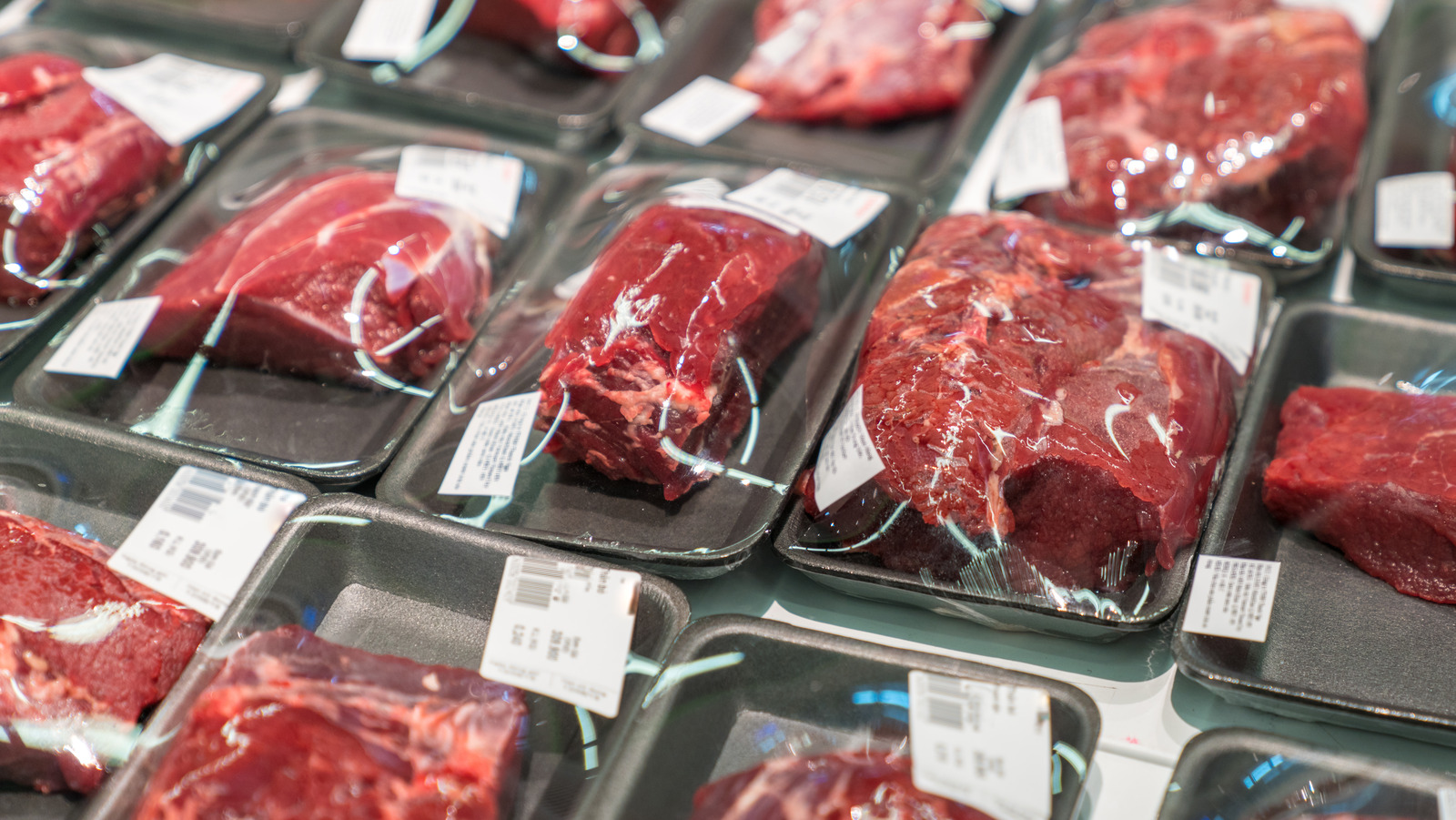
Both arm roast and chuck roast are delicious cuts of beef that can be prepared in a variety of ways. They’re perfect for slow cooking methods that bring out their rich flavors and tender textures.
- Arm Roast: This leaner cut benefits from methods like braising, stewing, or slow cooking. These methods help tenderize the meat and develop deep flavors.
- Chuck Roast: Due to its higher fat content, chuck roast is ideal for traditional pot roasts. The extra fat keeps the meat moist and juicy as it cooks slowly in the oven or on the stovetop.
Unlocking the Flavor of Arm Roast
There are several techniques to get the most out of your arm roast:
- Braising: Sear the roast on high heat first. Then, simmer it in a flavorful liquid like broth or wine until it falls apart easily with a fork.
- Slow Cooking: Let the roast cook low and slow for several hours in a slow cooker. This allows the meat to become incredibly tender and absorb the flavors of your chosen seasonings and vegetables.
- Pressure Cooking: If you’re short on time, pressure cooking can create a delicious and juicy arm roast in a fraction of the usual cooking time.
Whichever method you choose, remember to allow enough cooking time for the connective tissues to break down, resulting in a perfectly tender roast.
Chuck Roast: Cooking for Tender Perfection
Chuck roast is another versatile cut that offers a variety of delicious cooking options:
- Braising: Similar to arm roast, sear the chuck roast first to create a flavorful crust. Then, simmer it in a covered pot with broth or wine. This allows the meat to become tender and absorb the delicious cooking liquid.
- Slow Cooking: For a hands-off approach, cook the chuck roast on low heat for a long time in a slow cooker. This slow and steady cooking process breaks down the meat, making it incredibly tender and juicy.
Both braising and slow cooking result in a melt-in-your-mouth chuck roast, perfect for stews, pot roasts, or shredded beef dishes. These methods transform chuck roast into a satisfying and impressive meal.
Arm Roast and Chuck Roast: Nutrition and Health
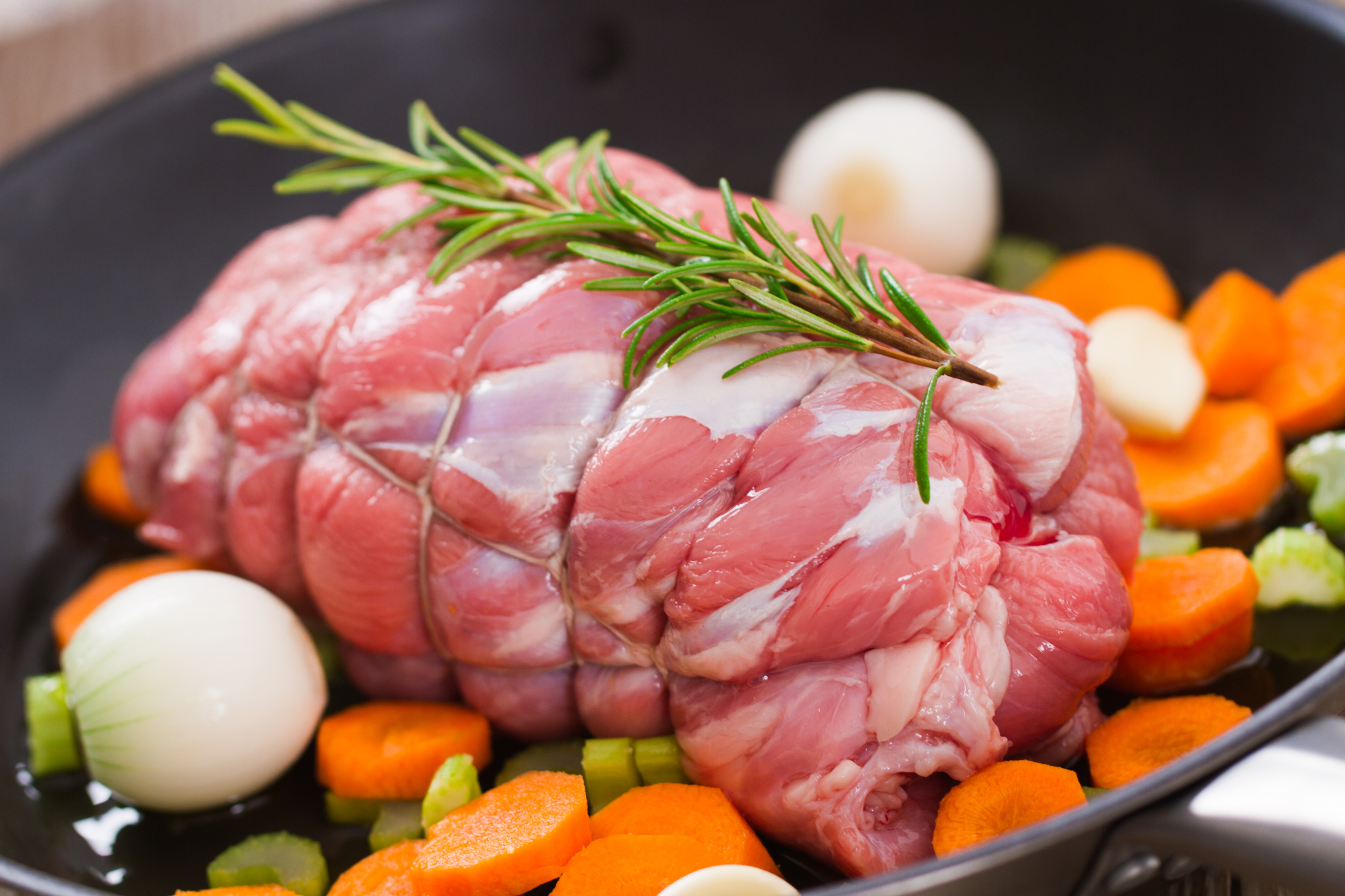
Both arm roast and chuck roast are good sources of protein, essential vitamins, and minerals. They’re naturally high in iron, zinc, and B vitamins, which are important for overall health and energy production.
However, it’s important to be aware that they also contain a significant amount of saturated fat. While some saturated fat is okay in a balanced diet, people with heart disease or high cholesterol should limit their intake. It’s always best to talk to a doctor or registered dietitian for personalized advice.
Arm Roast Nutrition:
- A 1-pound serving of arm roast has about:
- 1111.5 calories
- 83.5 grams of total fat (33.5 grams of saturated fat)
- 308.5 milligrams of cholesterol
- 84 grams of protein
- 1397 milligrams of sodium
- Arm roast is also a good source of iron (267.5 milligrams) and zinc (84 grams).
- Remember, arm roast is high in saturated fat, so eat it in moderation, especially if you have certain health conditions.
Chuck Roast Health Benefits:
- Chuck roast offers several health benefits because of its nutrients.
- It’s a great source of protein, which is essential for building and repairing muscles.
- Chuck roast also contains important vitamins and minerals, such as iron, zinc, and B vitamins, which contribute to overall health and well-being. These nutrients help support the immune system, energy production, and healthy blood cells.
- Just like arm roast, chuck roast is higher in fat, so eat it in moderation.
- Talk to your doctor for personalized dietary advice.
Pricing and Availability of Arm Roast and Chuck Roast
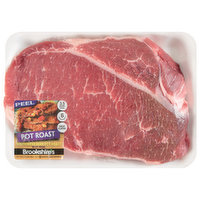
Both arm roast and chuck roast are budget-friendly options, typically costing around $8.99 to $9.99 per pound. However, keep in mind that the price can vary depending on:
- Location: Prices may differ based on where you live.
- Source: Butcher shops sometimes offer slightly different prices than grocery stores. On-farm purchases can also affect the cost.
Grain-Fed vs. Grass-Fed:
There’s usually no price difference between grain-fed and grass-fed beef for these cuts.
The availability of arm roast and chuck roast can fluctuate throughout the year. It’s always a good idea to check with your local butcher or grocery store to see if they have these cuts in stock.
Where to Find Arm Roast and Chuck Roast?
You can find arm roast and chuck roast at a variety of places:
- Butcher Shops: Local butchers often have a good selection of roasts, including both arm and chuck roast.
- Grocery Stores: Most grocery stores carry these cuts in their meat department.
- Online Meat Suppliers: Online retailers offer a convenient option, with various beef cuts delivered straight to your home.
No matter where you shop, prioritize fresh and well-marbled roasts. This will ensure the best flavor and texture for your dish.
Conclusion And Recommendation
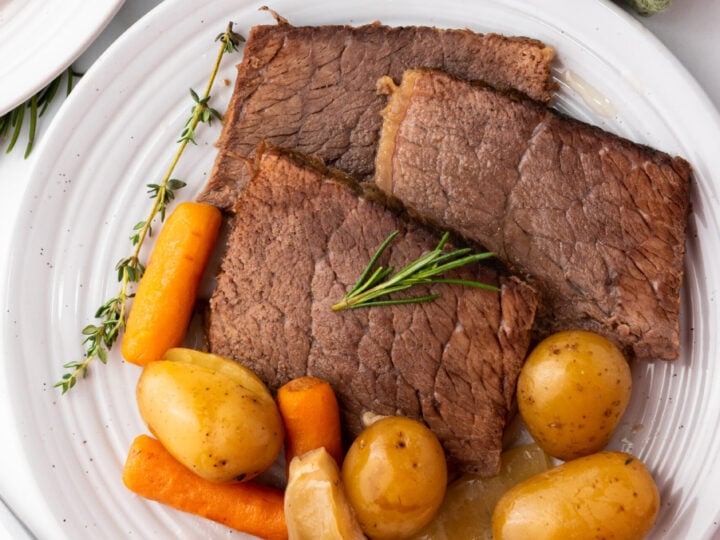
Arm roast and chuck roast are both delicious beef cuts with distinct qualities. Let’s explore their differences to help you pick the perfect one for your recipe.
The arm roast is a leaner cut with a compact, rectangular shape. This makes it versatile for various cooking methods, including roasting, braising, or even grilling for steaks (think Swiss steak!). Its flavor is milder but still undeniably beefy.
The chuck roast comes well-marbled, meaning it has more fat deposits, resulting in a richer taste and a more tender texture after slow cooking. This cut is ideal for dishes that benefit from long cooking times, like pot roast or stew, where the connective tissues break down and create a melt-in-your-mouth experience.
Ultimately, the best roast depends on your preference. Do you want a leaner cut with a milder flavor or a richer, more tender option? Consider the cooking method as well. If you’re short on time, the arm roast might be a better choice.
Experiment and Discover!
No matter which roast you choose, you’re in for a treat. Don’t be afraid to experiment with different recipes and techniques to find your favorite way to enjoy these flavorful cuts of beef.
FAQ About Meat Selection: Arm Roast Vs Chuck Roast
Q: What is the difference between Arm Roast and Chuck Roast?
A: The main difference lies in the location of the meat on the cow. Arm Roast comes from the shoulder area of the cow, while Chuck Roast is cut from the shoulder or neck area.
Q: Which cut is more tender, Arm Roast or Chuck Roast?
A: Generally, Arm Roast is considered more tender than Chuck Roast. Arm roast has slightly less connective tissue, which makes it tenderer when cooked properly.
Q: How should Arm Roast and Chuck Roast be cooked?
A: Arm Roast is best suited for roasting, slow cooking, or braising to enhance its tenderness. Chuck Roast is perfect for slow cooking methods like pot roasting, stewing, or braising to break down its tough fibers and develop rich flavors.
Q: Which cut is more flavorful, Arm Roast or Chuck Roast?
A: Chuck Roast is known for its rich, beefy flavor due to its marbling and connective tissue. On the other hand, Arm Roast might have a slightly milder taste compared to Chuck Roast.
Q: Are there any price differences between Arm Roast and Chuck Roast?
A: Chuck Roast is often more budget-friendly compared to Arm Roast. Arm Roast is relatively leaner and can be priced higher due to its tenderness and lower fat content.
Q: How can one decide between choosing Arm Roast or Chuck Roast for a recipe?
A: The choice between Arm Roast and Chuck Roast depends on the cooking method and the desired outcome of the dish. Select Arm Roast for quicker cooking methods where tenderness is key, while Chuck Roast is ideal for slow-cooking dishes that benefit from its rich flavor and ability to tenderize with long cooking times.

The Finer Diner has a rich history deeply rooted in the Mt. Oliver and Hilltop community. Our journey began with a simple yet ambitious vision – to create a welcoming space where friends and families could come together to enjoy delicious, comforting meals in a classic diner-style setting. Since our establishment, we have been dedicated to serving food, creating lasting memories, and fostering a sense of belonging within our community. Our commitment to quality, authenticity, and exceptional service has been the cornerstone of our success.